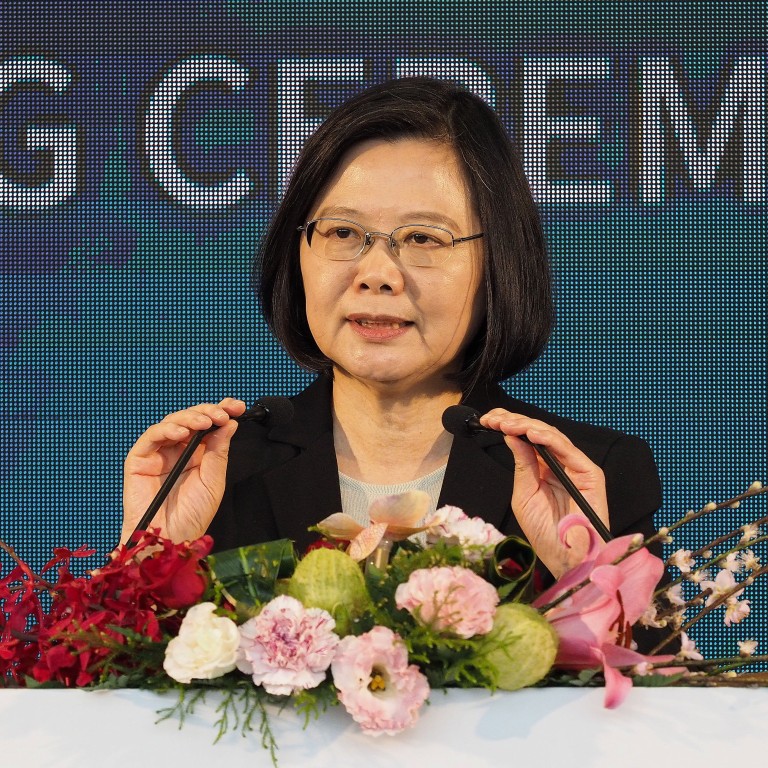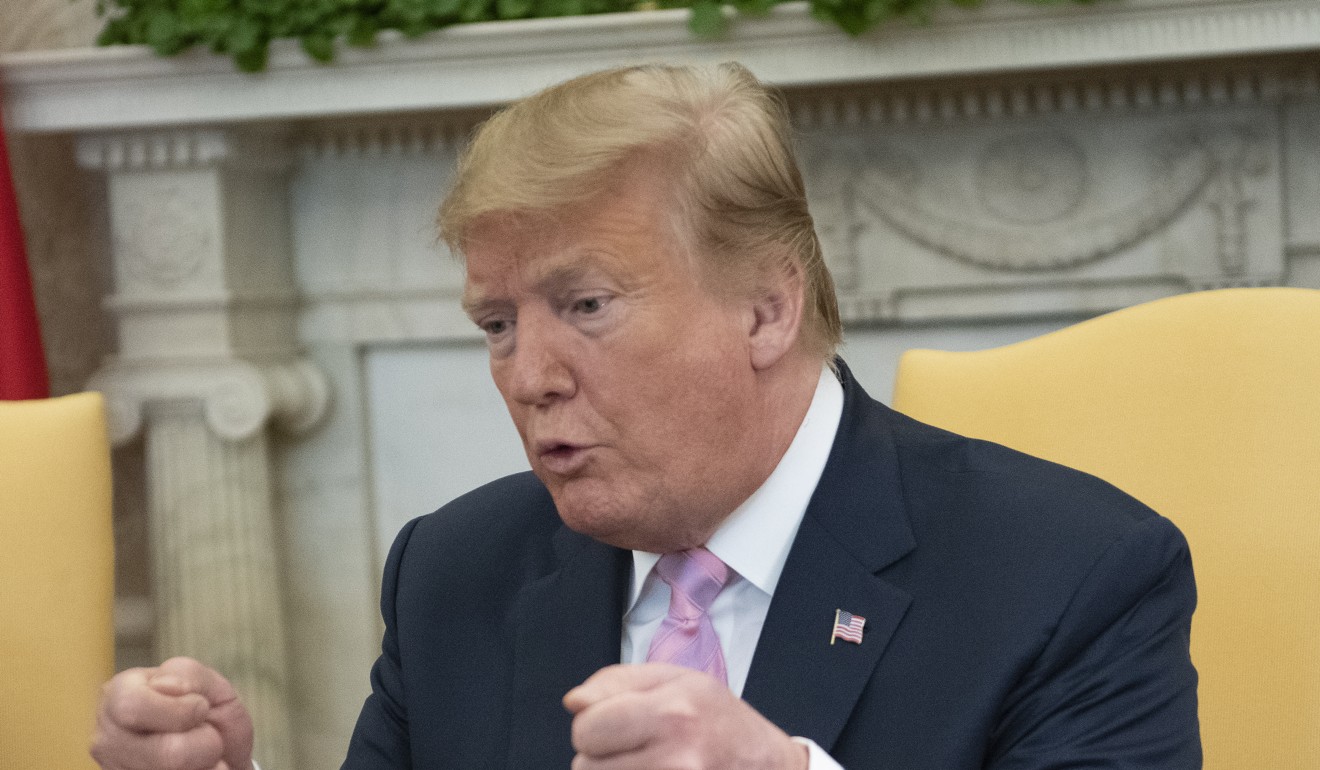
Unloved but essential: 40 years on, the Taiwan Relations Act remains flexible, durable and effective
- A conference reflects on how a 1979 US law has managed to keep an uneasy cross-strait peace
- ‘Strategic ambiguity’ has benefited not only Taiwan, but China and the US as well
Wednesday marks the 40th anniversary of an American law born of compromise, rooted in ambiguity and mired in minutiae that never completely pleased any of the parties involved, even as it went a long way to preventing war in East Asia.
The Taiwan Relations Act (TRA), which outlines America’s willingness to defend Taiwan – often to the consternation of China – even though it stopped short of defining the exact nature of its commitment, is a cold-war relic that has proven surprisingly flexible, durable and effective.
In a video link from Taipei, Taiwan President Tsai Ing-wen adopted a defiant tone Tuesday as she spoke to a conference in Washington marking the law’s four-decade history. During her 45-minute presentation, Tsai vowed to strengthen Taiwan’s defence and counter any use by Beijing of boycotts, embargoes and intimidation, while crediting the US law with helping Taiwan to survive its “darkest hour” of global isolation.
“The TRA has helped create a force for good,” she said in an address from the presidential office. “It has supported Taiwan’s development of the defence capabilities that we need, to resist any form of coercion.”
Supporters say the law allowed Washington, Beijing and Taipei to navigate a perilous shift as China emerged from relative poverty and isolation to become the world’s second-largest economy and a major military and political power. That growing muscle has enabled Beijing to contain Taiwan increasingly effectively in global affairs.
Taiwan has lost 16 diplomatic allies since 2001 reducing its official ties to just 17 countries, said Gerry Connolly, a US Democrat representative from Virginia who sits on the House Foreign Affairs’ Asia and the Pacific subcommittee. That includes five just since Tsai was elected president in 2016.
Beijing views Taiwan as a renegade province to be reunified with the mainland eventually, by force if necessary. Washington’s 1979 decision to switch its recognition from Taiwan to the mainland created a diplomatic hairball, namely how to treat Taipei.
Even as a succession of US administrations pushed ahead on strengthening ties with China, Congressional Republicans were intent on protecting Taiwan as a bulwark against Communism.
“The law was the price of having Republican support, they were damned if they were going to flush Taiwan down the toilet,” said Chris Nelson, a then junior Congressional staffer and now publisher of The Nelson Report, a newsletter focused on Asian affairs.
“Absolutely” there could have been a war without the law, he said. “It kept China on notice.”

Facing political pressure and a very effective Taiwanese lobby, the law’s drafters crafted a carefully but vaguely worded statute that made no one completely happy – but that each side could live with.
Among its tenets are what analysts refer to as “strategic ambiguity” on US military support for Taiwan, diplomatic recognition by Washington of the one-China policy recognising Beijing while acknowledging what the TRA called the “governing authorities on Taiwan”, in part through a government-linked non-profit organisation called the American Institute of Taiwan (AIT).
The law’s broad language provides an enduring framework with each new test. On Saturday, Taipei said that its plans to buy 66 upgraded F-16 fighter jets, known as F-16 Vipers, remained on track despite a Time magazine report that the deal was on ice.
Taiwan ‘at the front line of threats’ from Beijing, Tsai Ing-wen says
This comes as Washington and Beijing try to settle their trade fight that’s seen hundreds of billions of dollars in tariffs slapped on manufactured and agricultural products.
Next month, the AIT – which has always been the informal US embassy on Taiwan – will move into a new US$255 million building that some see as a symbol of Washington’s growing support for Taiwan.
Indeed, even though the administration of US President Donald Trump has been among the most visibly supportive of Taiwan since the switchover, calls come from Congress for the administration to further elevate ties to the island.
The spokesperson for the Chinese embassy in Washington was not immediately available to comment on the American law, or the significance of its 40th anniversary.
Analysts said it was unlikely the 1979 statute could be negotiated today given its birth at a time when the three parties’ interests in a deal outweighed their massive reservations.
Beijing was then willing to swallow US military support for Taipei to gain US diplomatic recognition, which it sought to counter the Soviet Union. Taipei reluctantly took the deal to stave off even worse diplomatic isolation. And Washington wanted a face-saving way to switch sides.
“It was a moment when the US was able to give [China] and Taiwan enough, allowing both to step back from the brink,” said Shelley Rigger, a professor at Davidson College and author of several books on Taiwan. “It was a bit of sleight of hand by the Americans that would eventually leave China and Taiwan feeling a bit tricked.”
Taiwan’s plan to buy 66 F-16 Viper fighter jets from US still on track
Stanley Kao, representative of the Taipei Economic and Cultural Representative Office in Washington, the island’s de facto embassy, said the law had shadowed his career, defined by Taiwan’s continuing struggle for global recognition.
“I joined the Taiwan foreign service exactly 40 years ago,” he said. “The challenge is how to keep the status quo, peace and stability across the strait while maintaining our democracy.”
Tuesday’s conference marking the law’s four decades was sponsored by the Centre for Strategic and International Studies, Brookings Institution and the Wilson Centre.

As it settles into middle age, the law has survived some serious testing. This includes the rise of independence-leaning governments in Taipei, Beijing’s 1995-96 launch of missiles hoping to intimidate Taiwanese voters and Trump’s telephone call with Tsai while still president-elect, a break with long-standing practice of avoiding any high-level official contact between Washington and Taipei.
That call was something of a “teaching moment” for Trump, analysts said, as he learned that threatening the status quo was a potentially dangerous game. He subsequently fell in line and reaffirmed the one-China policy, they said.
The law has also seen huge social changes over 40 years. The China of 1979 featured unheated grimy flats, endless streams of bicyclists pedalling clunky state-made Flying Pigeon models in major cities and the start of the one-child campaign – images hard to reconcile with China’s gleaming metropolises and conspicuous consumption today.
And Taiwan in the late 1970s was grappling with military dictatorship, a heavily buttoned-down society and the high-profile defection from Taiwan to China of Justin Yifu Lin, a former Taiwanese military officer who went on to become a noted Chinese economist.
Even as China’s state-run economy and expansive moves in the South China Sea are viewed warily by Washington, Taiwan has evolved into a vibrant democracy and liberal market economy that enjoys bilateral support in Congress.
Additional reporting by Lawrence Chung

